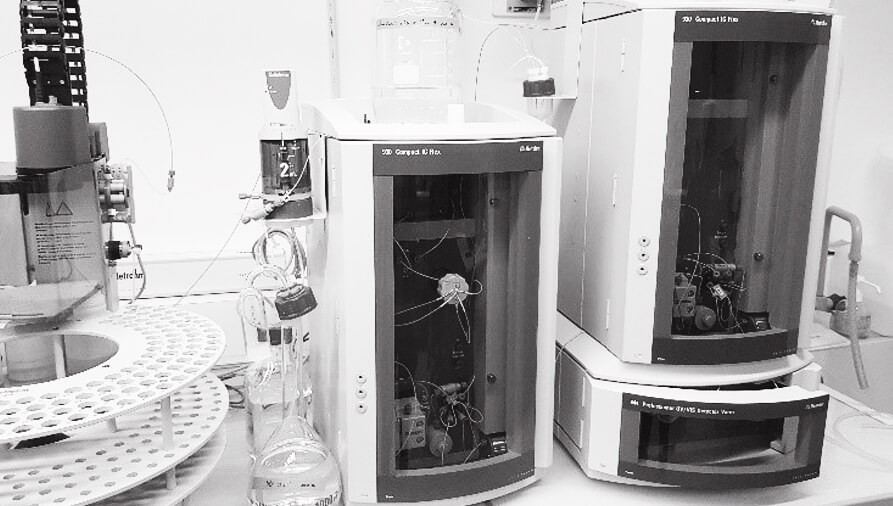Ion chromatography (IC analysis) in Laboratory

The 6NAPSE Group laboratories carry out the chemical analysis of your materials by ion chromatography.
What is ion chromatography (IC) ?
Ion chromatography is a analytical technique that has been used for decades. It provides a valuable complement to other atomic spectrometry methods such as Atomic Absorption Spectroscopy (AAS) or Inductively Coupled Plasma Spectrometry (ICP).
Laboratory of ion chromatography analysis
Ion chromatography covers a wide range of applications in different fields: the environment with water analysis (ultrapure, drinking or used and polluted water), food, pharmaceuticals, the semi- drivers…
In addition to ICP-AES, ICP-MS, SEM-EDX and IR elemental analysis, the 6NAPSE Group laboratories use ion chromatography to identify and quantify the presence of ions in your materials.
What are the advantages of ion chromatography?
- Validation of the presence or absence of ions and halogens in solution
- Material verification according to standards (ex: Cl, F, Br, I, nitrate, Fe, Cr (3 and 6), etc.)
- Analysis on all types of samples
- Measurement of traces and ultra-traces
- Possibility of custom work
Ion chromatography principle
Ion exchange chromatography or ion chromatography (IC) allows the identification of different ions using exchange resins. It is a technique widely used in the chemical analysis of various materials.
Its principle is simple, the CI separates the anions or the cations thanks to a column itself charged oppositely (positively to separate the anions or negatively to separate the cations). An eluent is used to drive the sample through the column. The ions of interest are then detected, mainly by conductivity or by UV/Visible absorbance.
Note: The sample matrix does not influence the separation of ions. In addition, the measurement of traces and ultra-traces by chromato-ionic is possible by the presence of a chemical suppressor and a CO2 suppressor allowing very good signal sensitivity. Indeed, the suppression step decreases the background conductivity of the eluent, minimizes the background noise, optimizes the signal-to-noise ratio and increases the sensitivity of the measurement system.
What types of ions?
Analysis by Ion Chromatography makes it possible to characterize inorganic anions such as fluorides, chlorides, sulphates, phosphates, but also organic anions such as acetates, formates or oxalates.
The analysis of Cr VI is also possible as the analysis of certain cations. For the analysis of some cations, IC may be attractive due to its sensitivity and detection.
- Fluoride
- Acetate
- Formate
- Chlorite
- Bromate
- Chloride
- Nitrite
- Bromide
- Nitrate
- Benzoate
- Phosphate
- Selenite
- Sulfate
- Succinate
- Arsenate
- Oxalate
6NAPSE Group assets
- A laboratory specializing in chemical analysis
- Large material databases
- Urgency and short deadlines
- Our technical experts are available to discuss your analytical needs, with the appropriate benchmarks and standards.
Contact us to discuss your needs quickly and technically!
